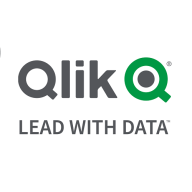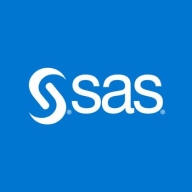

SAS Visual Analytics and Qlik Analytics Platform are in the business intelligence category, offering data analysis solutions. SAS has an edge in data processing power and visualization capabilities, while Qlik has a more intuitive design for data discovery, making it appealing despite higher costs.
Features: SAS Visual Analytics offers advanced statistical analysis, deep integration capabilities, and sophisticated data security. Qlik Analytics Platform uses an associative model for intuitive data exploration, has agile analytics, and provides superior self-service capabilities.
Room for Improvement: SAS Visual Analytics could improve its ease of deployment, lower initial costs, and reduce its complexity for beginner users. Qlik Analytics Platform could enhance visualization sophistication, decrease recurring costs, and offer more out-of-the-box integrations.
Ease of Deployment and Customer Service: Qlik Analytics Platform is noted for rapid deployment and an intuitive setup, integrating easily into existing IT infrastructures, with customer service known for promptness and reliability. SAS Visual Analytics requires a more detailed setup process and offers extensive technical support, though it is less promptly responsive compared to Qlik.
Pricing and ROI: SAS Visual Analytics involves higher initial costs but provides substantial ROI through advanced analytics capabilities. Qlik Analytics Platform offers scalable pricing with potentially faster ROI, favoring businesses needing rapid deployment, though it comes with higher recurring costs which many find justified by its robust features.
| Product | Market Share (%) |
|---|---|
| SAS Visual Analytics | 3.4% |
| Qlik Analytics Platform | 1.1% |
| Other | 95.5% |


| Company Size | Count |
|---|---|
| Small Business | 13 |
| Midsize Enterprise | 8 |
| Large Enterprise | 19 |
Part of the Qlik Sense family of products, the Qlik Analytics Platform puts the power of the Qlik Associative Engine and visualizations in the hands of application and web developers through powerful, open and modern API’s, allowing you to see the whole story within your data.
SAS Visual Analytics is a data visualization tool that is used for reporting, data exploration, and analytics. The solution enables users - even those without advanced analytical skills - to understand and examine patterns, trends, and relationships in data. SAS Visual Analytics makes it easy to create and share reports and dashboards that monitor business performance. By using the solution, users can handle, understand, and analyze their data in both past and present fields, as well as influence vital factors for future changes. SAS Visual Analytics is most suitable for larger companies with complex needs.
SAS Visual Analytics Features
SAS Visual Analytics has many valuable key features. Some of the most useful ones include:
SAS Visual Analytics Benefits
There are many benefits to implementing SAS Visual Analytics. Some of the biggest advantages the solution offers include:
Reviews from Real Users
Below are some reviews and helpful feedback written by PeerSpot users currently using the SAS Visual Analytics solution.
A Senior Manager at a consultancy says, “The solution is very stable. The scalability is good. The usability is quite good. It's quite easy to learn and to progress with SAS from an end-user perspective.
PeerSpot user Robert H., Co-owner at Hecht und Heck GmbH, comments, “What I really love about the software is that I have never struggled in implementing it for complex business requirements. It is good for highly sophisticated and specialized statistics in the areas that some people tend to call artificial intelligence. It is used for everything that involves visual presentation and analysis of highly sophisticated statistics for forecasting and other purposes.
Andrea D., Chief Technical Officer at Value Partners, explains, “The best feature is that SAS is not a single BI tool. Rather, it is part of an ecosystem of tools, such as tools that help a user to develop artificial intelligence, algorithms, and so on. SAS is an ecosystem. It's an ecosystem of products. We've found the product to be stable and reliable. The scalability is good.”
We monitor all Data Visualization reviews to prevent fraudulent reviews and keep review quality high. We do not post reviews by company employees or direct competitors. We validate each review for authenticity via cross-reference with LinkedIn, and personal follow-up with the reviewer when necessary.